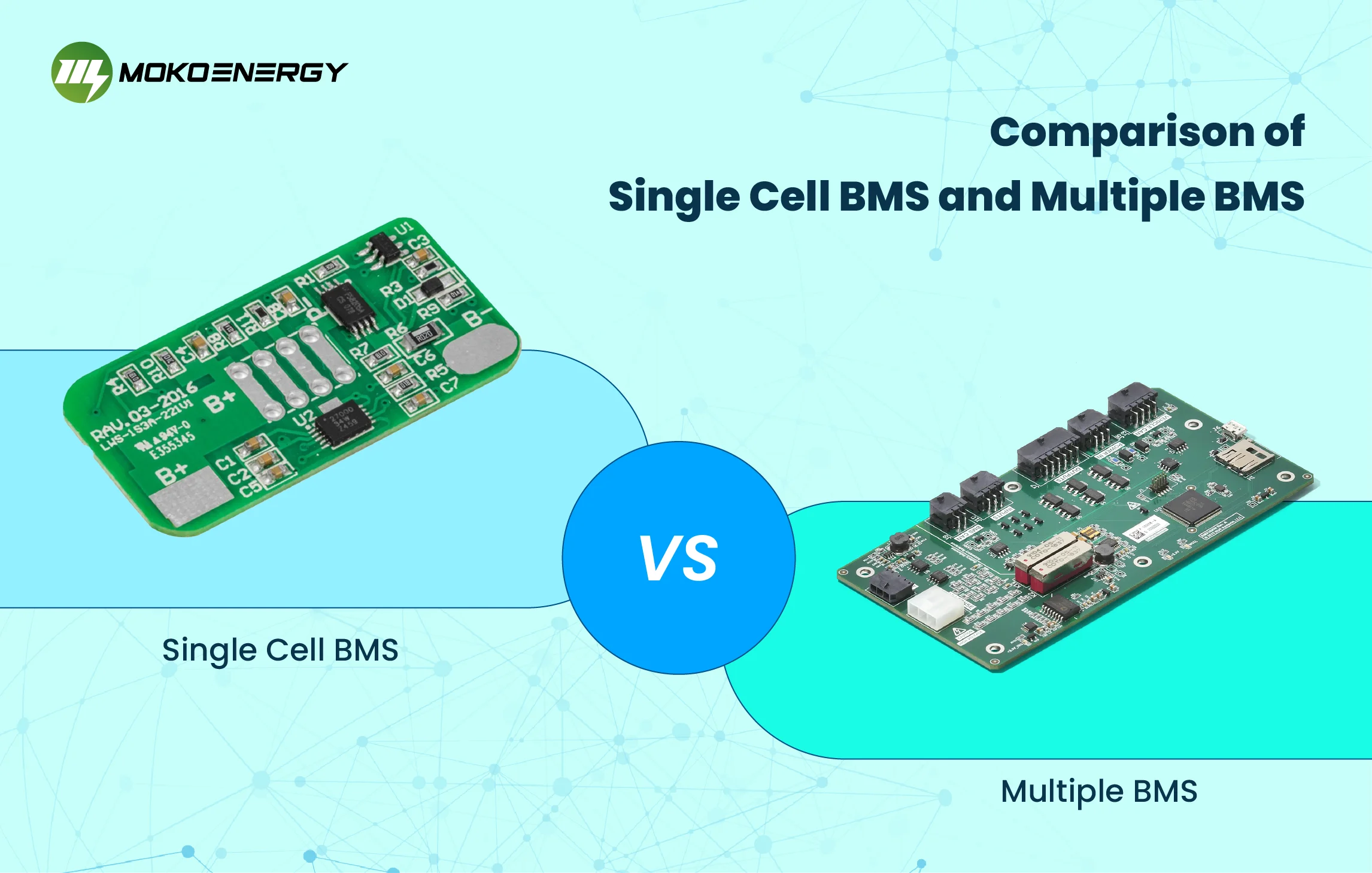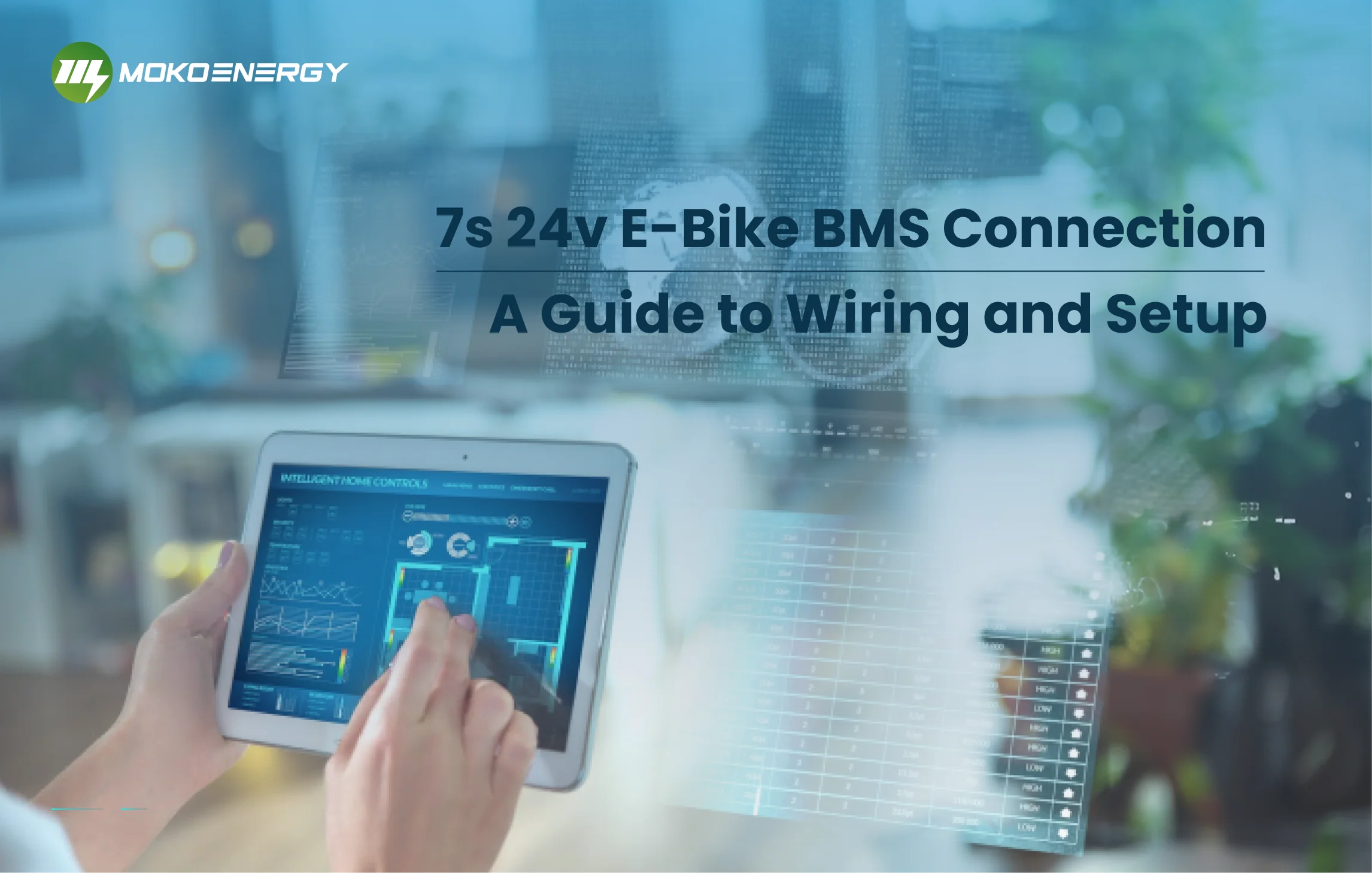Nowadays, electric scooters are very popular for short trips in cities. Many people choose electric scooters rather than electric cars. It’s a versatile and eco-friendly transportation option. With the growth of e-scooter, the need for electric scooter batteries is rising at the same time. A good battery for e-scooter means a good e-scooter’s performance and usability. We will introduce the batteries from the types to maintenance and safety considerations in this blog, and tell you the importance of BMS for electric scooter batteries.
Types of Electric Scooter Batteries
Electric scooter battery packs consist of numerous individual battery cells, specifically using 18650 cells—a size classification for lithium-ion (Li-Ion) batteries measuring 18 mm x 65 mm cylindrically. Each 18650 cells within a battery pack may seem unassuming individually, producing an electric potential of approximately 3.6 volts (nominal) and boasting a capacity of about 2.6 ampere-hours (2.6 A·h) or roughly 9.4 watt-hours (9.4 Wh). The operational range of these battery cells spans from 3.0 volts (indicating 0% charge) to 4.2 volts (indicating 100% charge).
Lithium Ion
Li-Ion batteries exhibit excellent energy density, representing the amount of energy stored per unit of physical weight. They also possess remarkable longevity, allowing for numerous discharge and recharge cycles while maintaining storage capacity. The term “Li-ion” encompasses various battery chemistries, including:
- Lithium manganese oxide (LiMn2O4); aka IMR, LMO, Li-manganese
- Lithium manganese nickel (LiNiMnCoO2); aka INR, NMC
- Lithium nickel cobalt aluminum oxide (LiNiCoAlO2); aka NCA, Li-aluminum
- Lithium nickel cobalt oxide (LiCoO2); aka NCO
- Lithium cobalt oxide (LiCoO2); aka ICR, LCO, Li-cobalt
- Lithium iron phosphate (LiFePO4); aka IFR, LFP, Li-phosphate
Each chemistry trades off safety, cost, and performance.
Lithium Manganese (INR, NMC)
Many quality e-scooters use INR chemistry, one of the safest. It provides high capacity and output. Manganese lowers resistance, allowing high output and low temperatures. This reduces thermal runaway and fire risk. E-scooters with INR include WePed GT 50e and Dualtron models.
Lead-acid
Lead-acid batteries are common in cars and large vehicles like golf carts. They’re also in some inexpensive kids’ scooters, like Razor. Lead-acid batteries are cheap but have low energy density, weighing much more than Li-ion per stored energy.
Battery Packs
To build high-capacity packs, many 18650 Li-ion cells are assembled into brick-shaped structures. The BMS monitors and regulates power flow. Cells are connected end-to-end in series to sum voltage, and strands are paralleled to increase current. This way manufacturers can tune voltage, current, and capacity as needed. Cell configuration affects performance, but not total stored energy.
Voltage and Capacity of E-Scooter Batteries
Each battery cell in a scooter battery pack typically goes from 3.0 volts (empty) up to 4.2 volts (full). This means a 36-volt pack, with 10 cells, goes from 30 volts (empty) to 42 volts (full). You can see how much charge is left by checking the voltage (some scooters show this). See our voltage chart for different battery types.
Voltage Sag
All batteries lose some power when being used. This voltage drop is caused by chemical reactions, heat, and electrical resistance in the battery. It makes the voltage not perfectly match the charge left. When first turned on, the voltage takes a quick dip, sometimes looking like 10% of the charge was lost. But it comes back when turned off. Voltage also drops more at the end of long rides. Resting the battery makes the voltage go back up.

Capacity and Range
Scooter battery capacity uses watt-hours (Wh). This measures stored energy. For example, a 1 Wh battery can give 1 watt of power for 1 hour. More Wh gives more range. An average scooter has around 250 Wh, and can go 10 miles at 15 mph. Very high-performance ones get into the thousands of Wh and can go 60 miles.
Battery Management Systems on Scooter
Despite the incredible benefits of lithium-ion 18650 batteries, they are not as durable as other battery technologies and can explode if used incorrectly. It is for this reason that they are almost always assembled into battery packs with BMS.
Electric scooter BMS is a critical component of electric scooter batteries. The BMS plays a pivotal role in monitoring and managing the individual cells within the battery pack. Its primary functions include balancing the charge among cells, preventing overcharging or deep discharging, and ensuring uniform cell performance.
The significance of the BMS extends to both the safety and longevity of the electric scooter battery. By preventing overcharging or discharging, the BMS safeguards the battery from potential damage, reducing the risk of safety hazards. Additionally, the BMS contributes to extending the overall lifespan of the battery, optimizing its performance over time, and enhancing the sustainability of your electric scooter investment.
Battery Life
Lithium-ion batteries in electric scooters typically last for 300-500 charge/discharge cycles before beginning to lose capacity. Depending on usage, this equates to 3,000-10,000 miles on an average scooter model. As the battery capacity diminishes, it is common to lose 10-20% initially, with further declines over time. Modern battery management systems aim to prolong battery life, but proper care can further extend lifespan. Recommendations include:
- Avoid storing the scooter long-term while plugged into the charger or with a full battery charge.
- Only activate and use the battery within the 32°F to 113°F (0°C to 45°C) temperature range.
- Charge at lower speeds/C-rates when possible, as slower charging reduces stress.
- Do not store the scooter fully discharged for extended periods, as deep discharge below 2.5V degrades lithium-ion batteries over time. The ideal storage charge is around 50%.
- Top up to around 50% charge before any long-term storage, especially in cold/inclement weather.

While battery packs have finite lifespans, careful charging/discharging, avoiding temperature extremes, and maintaining a 40-60% charge level during storage can substantially extend service life. Aggressive riding that pushes charge/discharge cycles to the limits has a particularly detrimental impact. In essence, more moderate power usage allows the battery to empty and recharge in a more controlled fashion for longevity. Keeping charge levels between 10-90% as often as possible also preserves overall capacity.
Conclusion
In this blog, we’ve talked about how voltage, battery capacity, and BMS impact electric scooter performance. Properly maintaining these core components unlocks an e-scooter’s full power and longevity. Simple voltage readings fail to reveal underlying issues from battery wear. So relying on a BMS and routine checkups gives owners the insight they need. An informed, diligent owner can get the most out of their wheels.
MOKOEnergy offers customized BMS solutions that can ensure the safety and performance of the battery. With our expertise, electric scooter manufacturers can benefit from customized BMS solutions that prevent overcharging, balance cell performance, and contribute to the overall health of the battery. By choosing MOKOEnergy, you not only invest in cutting-edge BMS technology but also align with a commitment to safety and sustainability. As the electric scooter landscape continues to evolve, having a reliable partner like MOKOEnergy ensures that your ride remains not only electrifying but also secure.






